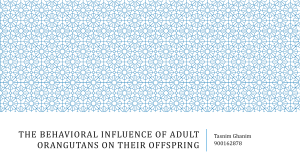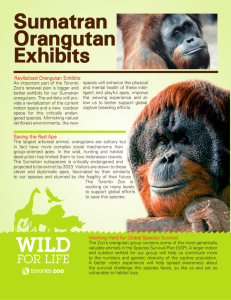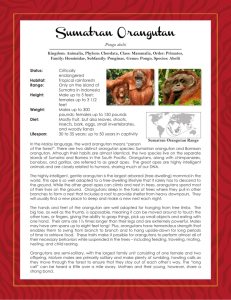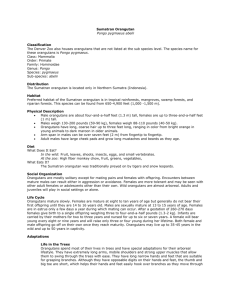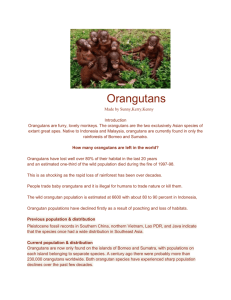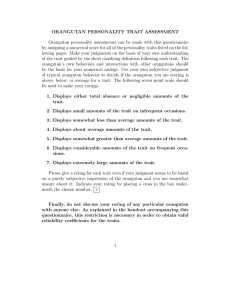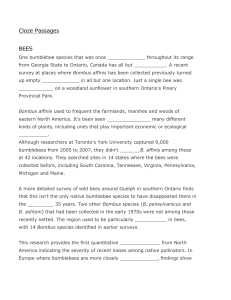Scientists Say Orangutans Can Exhibit 'Culture
advertisement
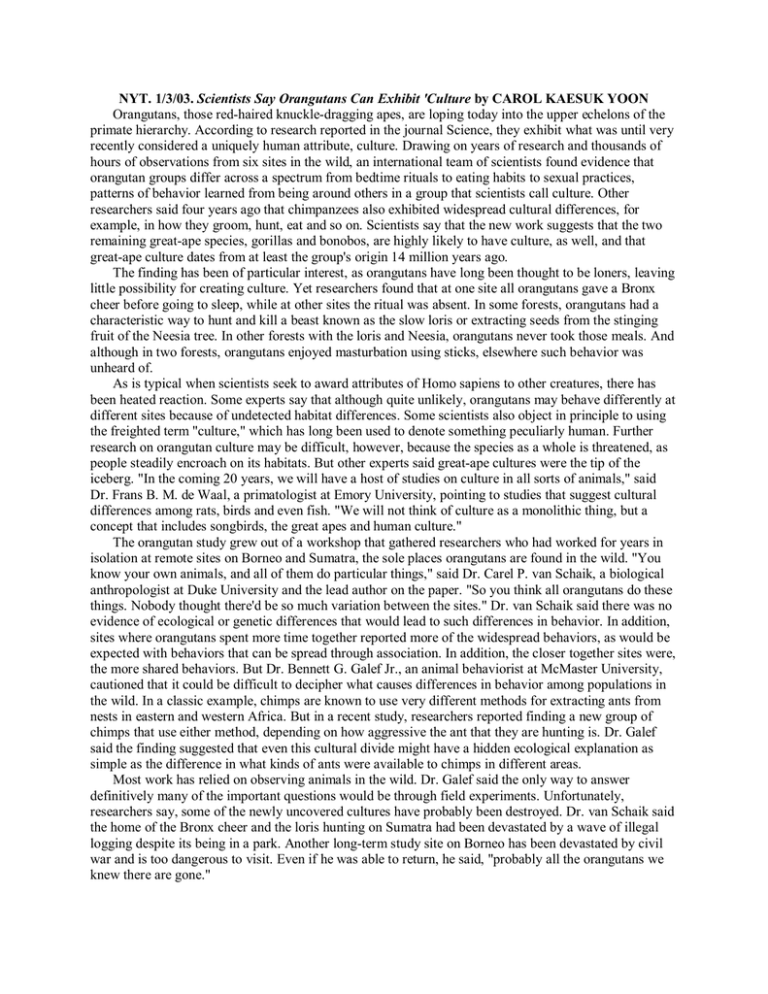
NYT. 1/3/03. Scientists Say Orangutans Can Exhibit 'Culture by CAROL KAESUK YOON Orangutans, those red-haired knuckle-dragging apes, are loping today into the upper echelons of the primate hierarchy. According to research reported in the journal Science, they exhibit what was until very recently considered a uniquely human attribute, culture. Drawing on years of research and thousands of hours of observations from six sites in the wild, an international team of scientists found evidence that orangutan groups differ across a spectrum from bedtime rituals to eating habits to sexual practices, patterns of behavior learned from being around others in a group that scientists call culture. Other researchers said four years ago that chimpanzees also exhibited widespread cultural differences, for example, in how they groom, hunt, eat and so on. Scientists say that the new work suggests that the two remaining great-ape species, gorillas and bonobos, are highly likely to have culture, as well, and that great-ape culture dates from at least the group's origin 14 million years ago. The finding has been of particular interest, as orangutans have long been thought to be loners, leaving little possibility for creating culture. Yet researchers found that at one site all orangutans gave a Bronx cheer before going to sleep, while at other sites the ritual was absent. In some forests, orangutans had a characteristic way to hunt and kill a beast known as the slow loris or extracting seeds from the stinging fruit of the Neesia tree. In other forests with the loris and Neesia, orangutans never took those meals. And although in two forests, orangutans enjoyed masturbation using sticks, elsewhere such behavior was unheard of. As is typical when scientists seek to award attributes of Homo sapiens to other creatures, there has been heated reaction. Some experts say that although quite unlikely, orangutans may behave differently at different sites because of undetected habitat differences. Some scientists also object in principle to using the freighted term "culture," which has long been used to denote something peculiarly human. Further research on orangutan culture may be difficult, however, because the species as a whole is threatened, as people steadily encroach on its habitats. But other experts said great-ape cultures were the tip of the iceberg. "In the coming 20 years, we will have a host of studies on culture in all sorts of animals," said Dr. Frans B. M. de Waal, a primatologist at Emory University, pointing to studies that suggest cultural differences among rats, birds and even fish. "We will not think of culture as a monolithic thing, but a concept that includes songbirds, the great apes and human culture." The orangutan study grew out of a workshop that gathered researchers who had worked for years in isolation at remote sites on Borneo and Sumatra, the sole places orangutans are found in the wild. "You know your own animals, and all of them do particular things," said Dr. Carel P. van Schaik, a biological anthropologist at Duke University and the lead author on the paper. "So you think all orangutans do these things. Nobody thought there'd be so much variation between the sites." Dr. van Schaik said there was no evidence of ecological or genetic differences that would lead to such differences in behavior. In addition, sites where orangutans spent more time together reported more of the widespread behaviors, as would be expected with behaviors that can be spread through association. In addition, the closer together sites were, the more shared behaviors. But Dr. Bennett G. Galef Jr., an animal behaviorist at McMaster University, cautioned that it could be difficult to decipher what causes differences in behavior among populations in the wild. In a classic example, chimps are known to use very different methods for extracting ants from nests in eastern and western Africa. But in a recent study, researchers reported finding a new group of chimps that use either method, depending on how aggressive the ant that they are hunting is. Dr. Galef said the finding suggested that even this cultural divide might have a hidden ecological explanation as simple as the difference in what kinds of ants were available to chimps in different areas. Most work has relied on observing animals in the wild. Dr. Galef said the only way to answer definitively many of the important questions would be through field experiments. Unfortunately, researchers say, some of the newly uncovered cultures have probably been destroyed. Dr. van Schaik said the home of the Bronx cheer and the loris hunting on Sumatra had been devastated by a wave of illegal logging despite its being in a park. Another long-term study site on Borneo has been devastated by civil war and is too dangerous to visit. Even if he was able to return, he said, "probably all the orangutans we knew there are gone."



